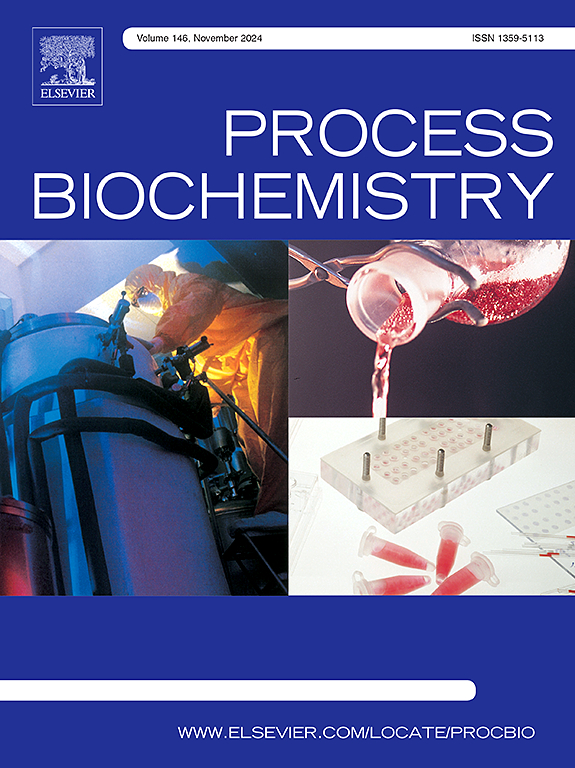Development of novel dead-end filtration strategy for isolation of pullulan broth
IF 4
3区 生物学
Q2 BIOCHEMISTRY & MOLECULAR BIOLOGY
引用次数: 0
Abstract
Pullulan, a natural extracellular polysaccharide, is widely used in food and related industries, cosmetics, and pharmaceuticals. The high viscosity of its fermentation broth poses significant challenges for efficient separation, making the process both difficult and time-consuming. In this study, cross-flow membrane filtration was first applied to separate a two-fold diluted broth (feed solution), where membranes with pore sizes ranging from 150 kDa to 0.8 μm rejected over 99 % of cells and approximately 50 % of pullulan. This phenomenon was attributed to higher shear forces increasing pullulan particle size in solution, thereby reducing its recovery rate. To address this limitation, a dead-end filtration strategy was developed using a 1–3 μm filtration medium with 1 % filter aid. During concentration-mode filtration, fouling mechanisms in the first stage showed indistinct differences between standard and intermediate blocking, while the second stage exhibited unclear distinctions between complete and intermediate blocking. A favorable membrane regeneration strategy was identified: sequential washing with fresh water followed by detergent powder. This method achieved 99.54 % biomass removal and a pullulan recovery rate of 90.67 %. Overall, the dead-end filtration strategy presents a novel approach for separating high-viscosity biopolymers, offering both efficiency and practicality for industrial applications.
蒲兰兰肉汤分离的新型终端过滤策略的开发
普鲁兰是一种天然的胞外多糖,广泛应用于食品及相关行业、化妆品、制药等。其发酵液的高粘度对有效分离提出了重大挑战,使该过程既困难又耗时。在这项研究中,交叉流膜过滤首先应用于分离两倍稀释的肉汤(饲料溶液),其中孔径从150 kDa到0.8 μm的膜拒绝了99% %的细胞和大约50% %的普鲁兰。这是由于较高的剪切力增大了溶液中普鲁兰的粒径,从而降低了其回收率。为了解决这一限制,研究人员开发了一种终端过滤策略,使用1 - 3 μm的过滤介质和1 %的助滤剂。在浓度模式过滤过程中,第一阶段的污垢机制在标准堵塞和中间堵塞之间表现出不明确的差异,而第二阶段的污垢机制在完全堵塞和中间堵塞之间表现出不明确的区别。确定了一种有利的膜再生策略:用淡水依次洗涤,然后用洗衣粉洗涤。该方法生物质去除率为99.54 %,普鲁兰回收率为90.67 %。总的来说,终端过滤策略为分离高粘度生物聚合物提供了一种新的方法,为工业应用提供了效率和实用性。
本文章由计算机程序翻译,如有差异,请以英文原文为准。
求助全文
约1分钟内获得全文
求助全文
来源期刊

Process Biochemistry
生物-工程:化工
CiteScore
8.30
自引率
4.50%
发文量
374
审稿时长
53 days
期刊介绍:
Process Biochemistry is an application-orientated research journal devoted to reporting advances with originality and novelty, in the science and technology of the processes involving bioactive molecules and living organisms. These processes concern the production of useful metabolites or materials, or the removal of toxic compounds using tools and methods of current biology and engineering. Its main areas of interest include novel bioprocesses and enabling technologies (such as nanobiotechnology, tissue engineering, directed evolution, metabolic engineering, systems biology, and synthetic biology) applicable in food (nutraceutical), healthcare (medical, pharmaceutical, cosmetic), energy (biofuels), environmental, and biorefinery industries and their underlying biological and engineering principles.
 求助内容:
求助内容: 应助结果提醒方式:
应助结果提醒方式:


